Colour Research Vol.2
Magnificent Half-timbered Houses
The Fascination of a Traditional Craft
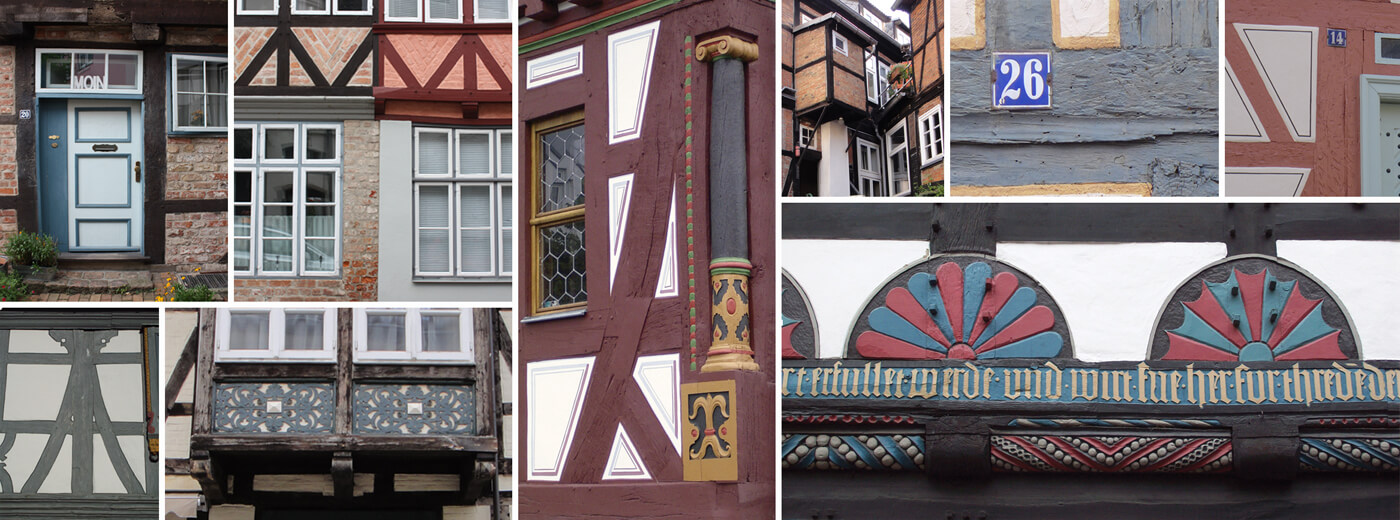
Of Traditional craftsmanship, ornaments and bold colour
Our idea of a romantic German town is closely linked to traditional half-timbered architecture. Germany has a wealth of around 2.5 million half-timbered buildings and thus more than hardly any other country in the world. A trip along the German Half-Timbered Houses Route from the Elbe to Lake Constance is a journey through the history of half-timbered houses with their various typical half-timbered styles, shapes and colour nuances. But what actually makes up this fascination?
Half-timbered architecture not only meets (and always has) the highest ecological standards, but also satisfies the highest aesthetic demands. It is a unity of timber framework (load-bearing uprights, horizontal sleeper and transom and diagonally installed struts), the filled-in compartments in-between (masonry, face bricks or quarry stone or wooden meshwork plastered with clay) and, depending on the construction period and region, different forms of decoration, such as painted woodcarvings, colour framed compartments or the arrangement of bricks in the spaces between. In short, half-timbered construction combines architecture, ornamentation and colour in its purest perfection.
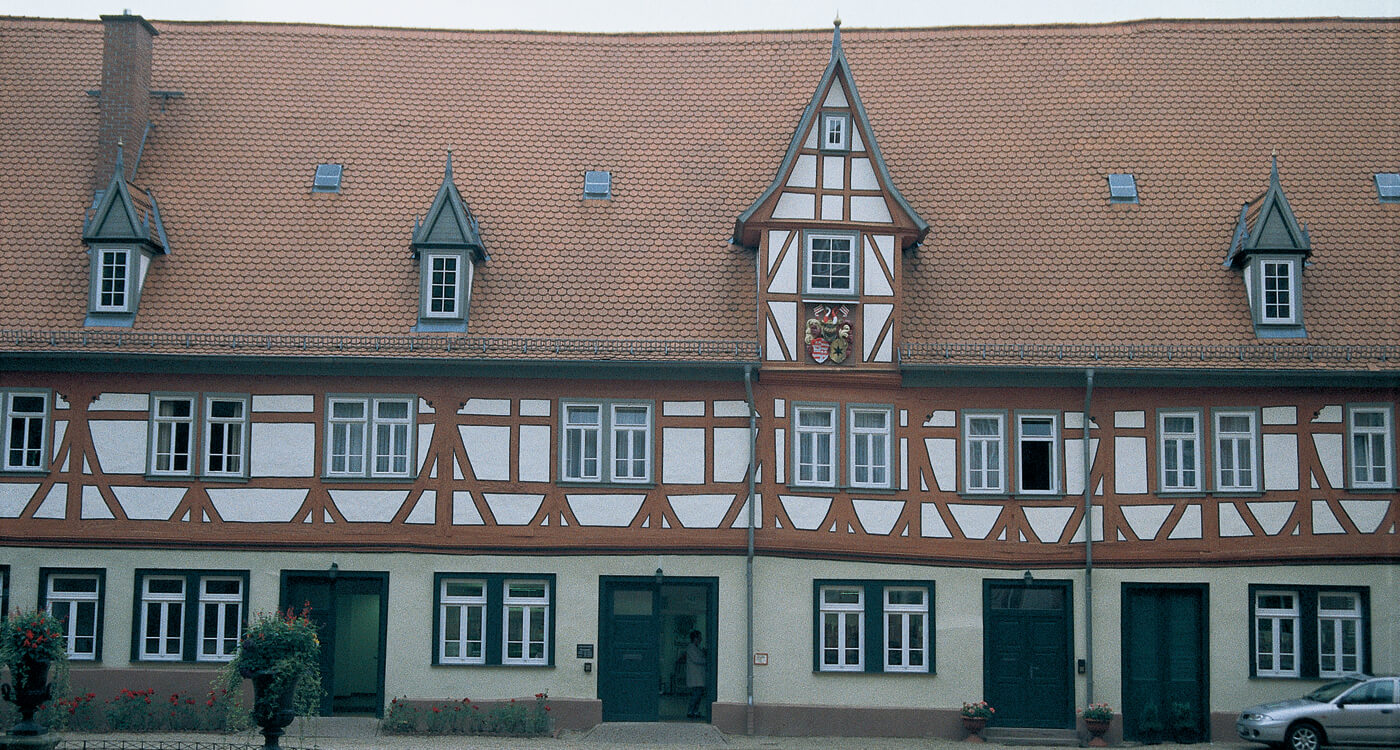
Half-timbered house in the Forest of Odes
Of traditional craftsmanship, ornaments and bold colour
Half-timbered buildings still dominate the appearance of entire old towns and village centres today. It surprises with the multitude of regionally different construction details and decorative elements. Timber frameworks have been coated with paint at least since the 16th century for visual and preservation reasons. The most common colours for timber frameworks - red ('ox blood'), brown, black, and yellow - are almost always iron pigments. The filled areas between the wooden beams are often whitewashed or appear in slightly veiled shades of white due to the addition of iron oxide or vegetable black, less often in light blue (ultramarine) or yellow (ochre). Decorative lines (contours and accompanying lines) in colourful or non-colourful shades were traditional paintings, i.e. quasi ornamentation of the infills.
Half-timbered Buildings in Lower Saxony:
The "Lower Saxonian" half-timbered building is particularly striking for its rich, carved forms of decoration, which are much rarer in central and southern Germany. In the Westphalian-Lower Saxony and also in the Thuringian area, particularly brown, green and grey shades are to be frequently found. Black timber frameworks are also widespread, for example in the Sauerland region. In contrast to the colour of the beams, valuable carvings are usually set off in polychrome colours.
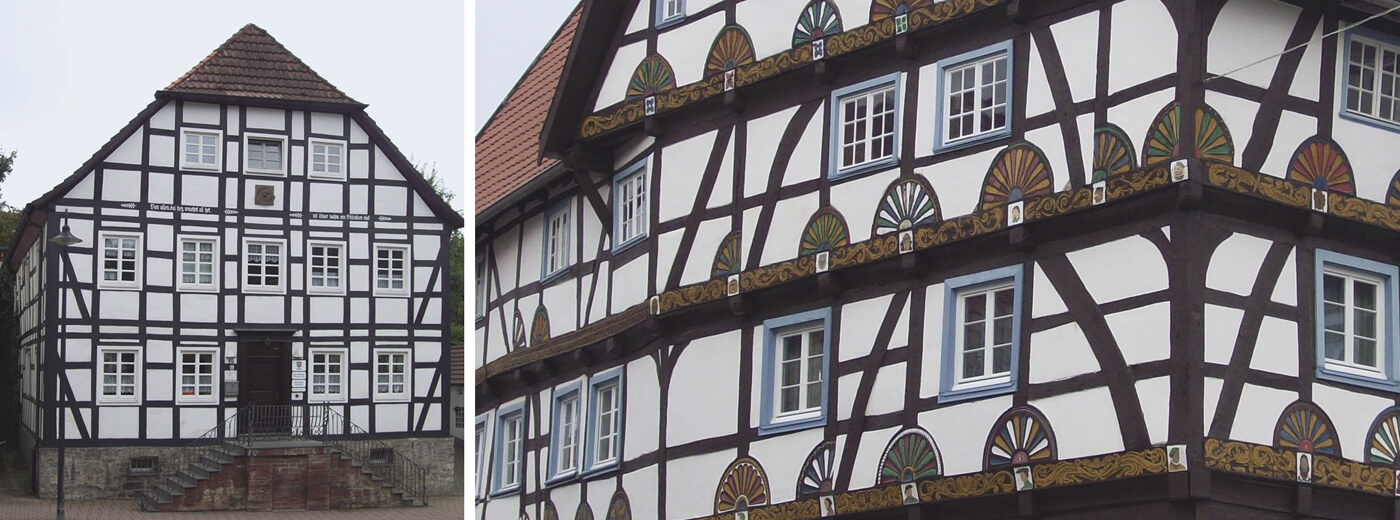
Half-timbered houses in Balve and Soest
Franconian Half-timbered Buildings:
The Franconian half-timbered building type captivates by the playfulness of its ornamentation. St. Andrew's crosses, fire dogs, rosettes, diamonds, carvings on posts and beams as well as plaster inlays are part of this rich design repertoire, which reached its peak around 1600. In the Franconian and Alemannic regions, highly saturated red and brown shades predominate.
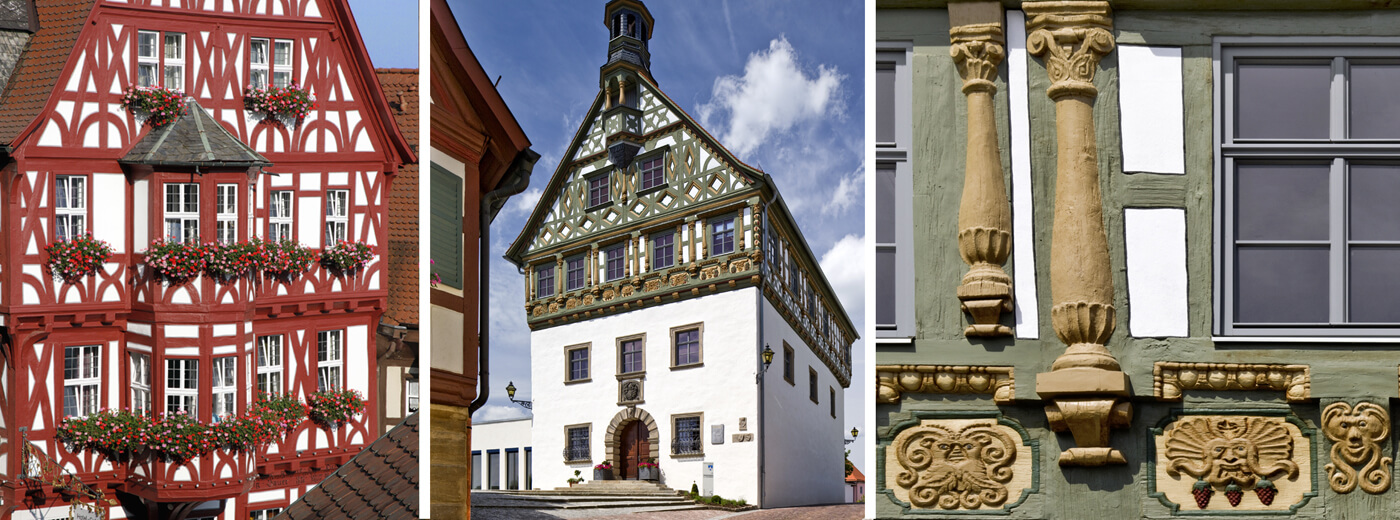
Town Halls in Miltenberg and Burkunstadt
Alemannic (Upper-German) Half-timbered Buildings:
The clear construction lines and the wide distance between the posts lend the facades a striking appearance. The core zone is reflected in the section "From the Neckar to the Black Forest and Lake Constance" of the German Half-Timbered Houses Route. The town halls of Esslingen am Neckar, Besigheim and especially of Markgröningen are regarded as outstanding examples of Alemannic half-timbered construction in its "fully developed" form, "a wonderful and impressive building of strikingly harmonious design and monumental effect, which is without doubt one of the most beautiful half-timbered houses in Germany".
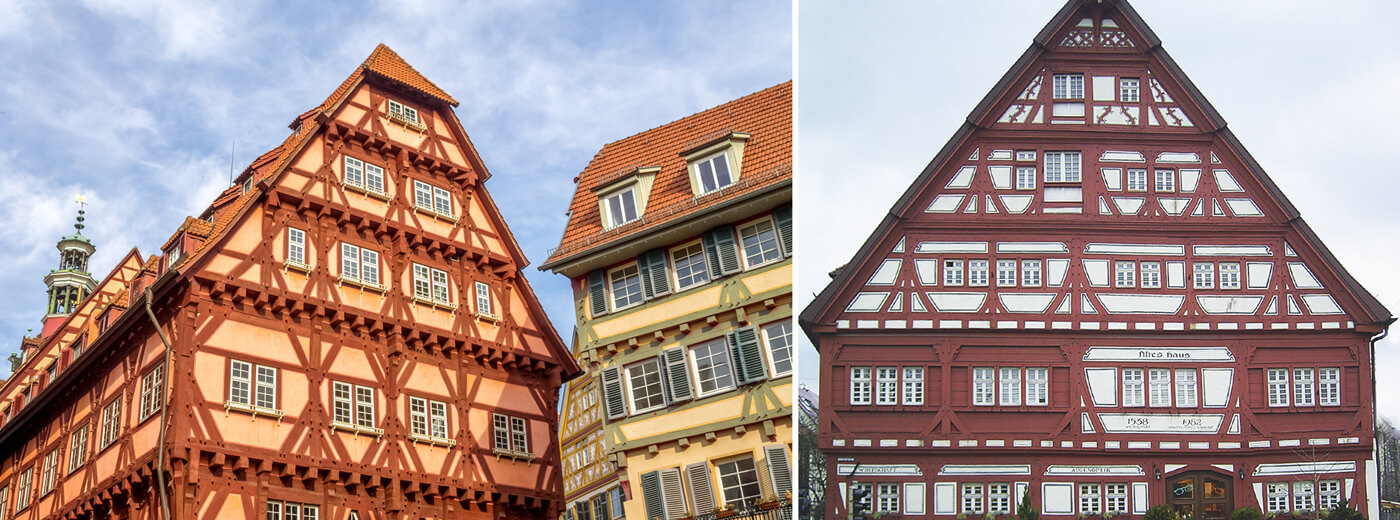
Half-timbered houses in Esslingen/Neckar and Kirchheim
Sources:
https://de.wikipedia.org/wiki/Fachwerkhaus
http://www.germany.travel/de/freizeit-erholung/ferienstrassen/deutsche-fachwerkstrasse.html
http://wissen.malerblatt.de/fassadenfarben/grundlagen/67-renovierung-von-fachwerkfassaden.html?start=3
https://de.wikipedia.org/wiki/Alemannisches_Fachwerk
http://www.zeit-und-wahrheit.de/fachwerk-4628/




